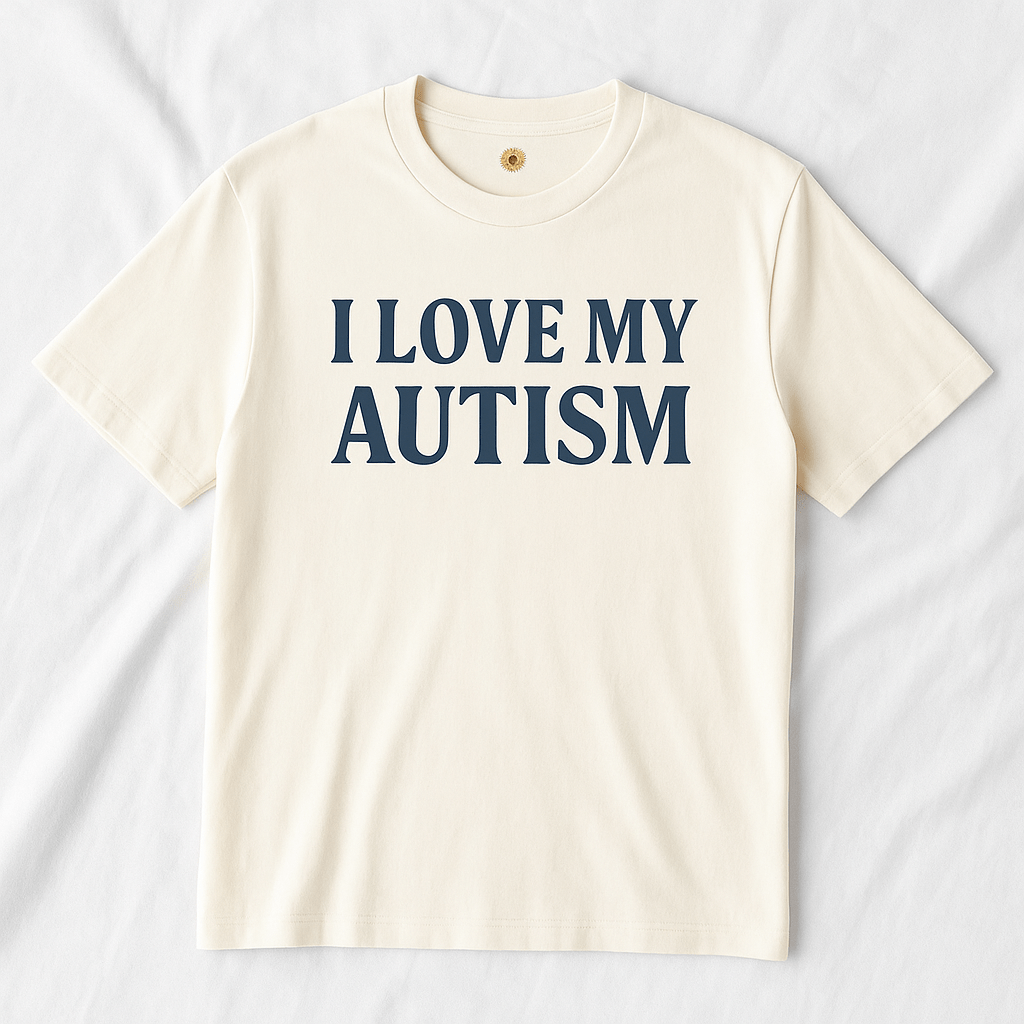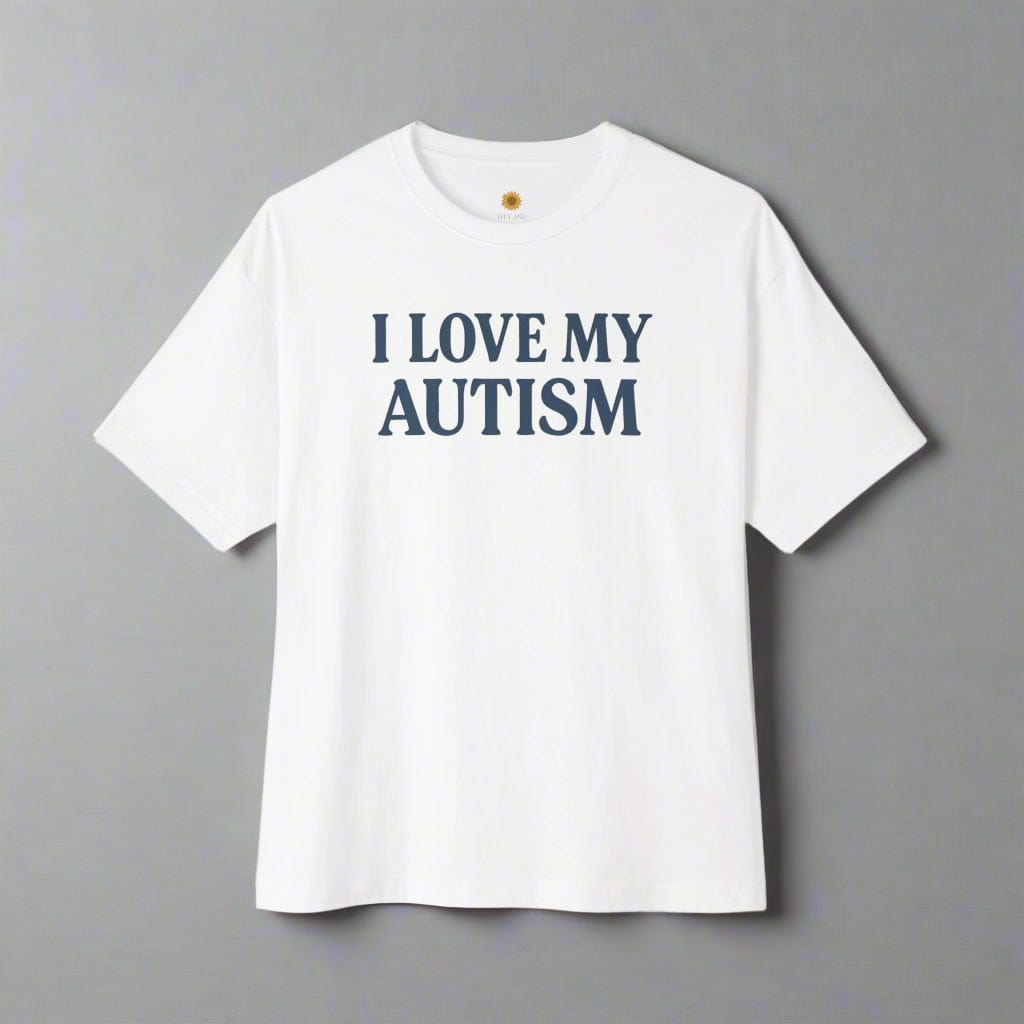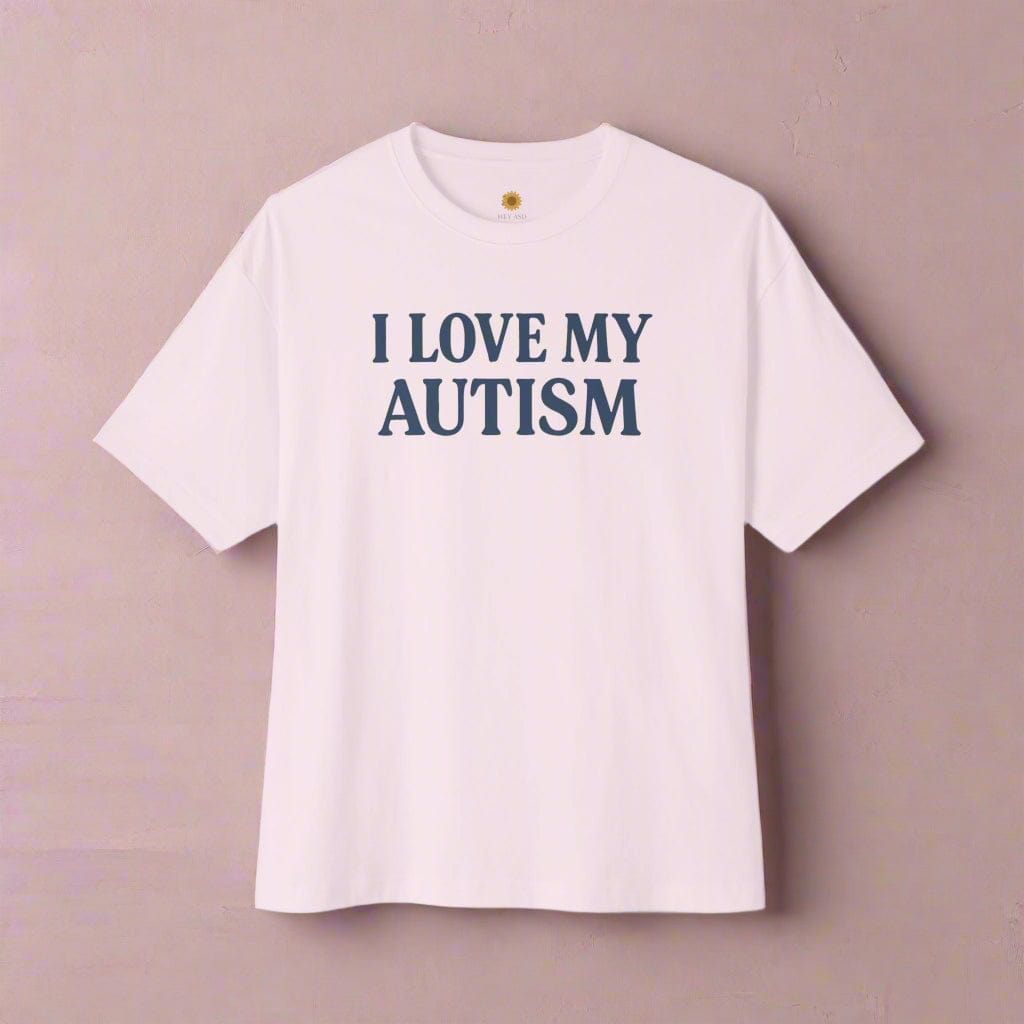GABA and Autism: Understanding the Brain’s Calming Connection

Written by the HeyASD Editorial Team
Have you ever wondered why some moments feel harder to calm your mind — or why sensory overload can strike without warning? Deep within your brain, a messenger called GABA helps quiet the noise. Often called the brain’s “calming chemical,” GABA slows overactive signals and restores balance when the world feels too much.
Researchers have discovered that autistic people may process GABA differently — not as a flaw, but as part of the unique rhythm of the autistic brain. Understanding this connection doesn’t offer a “fix,” but it can offer clarity, validation, and self-understanding. This article explores what science knows about GABA and autism, blending research with real-world insights from the neurodivergent community. It is for informational purposes only, not medical advice.
What is GABA? The Brain’s Calming Messenger
Gamma-aminobutyric acid, or GABA, is the primary inhibitory neurotransmitter in your central nervous system. Its main job is to reduce neuronal excitability throughout your nervous system. In simple terms, it applies the brakes when your brain activity gets too high, helping to create balance and prevent overstimulation. Understanding GABA's function is a key step in exploring the unique neural mechanisms of the autistic brain.
The connection between GABA and autism spectrum disorder is a growing area of scientific interest, as it may help explain differences in sensory processing and behavioral traits. The following sections will break down what GABA is, how it works, and its role in everyday life.
GABA as an Inhibitory Neurotransmitter
Think of your brain as a busy city with traffic lights. Some signals tell the traffic to "go," while others tell it to "stop." GABA is the "stop" signal. As an inhibitory neurotransmitter, its primary role is to block or slow down specific nerve signals in your brain. When GABA binds to a receptor, it makes it less likely for that neuron to fire and send a message.
This process of GABAergic inhibition is crucial for maintaining a healthy balance in brain activity. Without it, nerve cells could fire too often and too easily, leading to over-excitement and a feeling of being overwhelmed. This braking system helps regulate everything from muscle tone to emotional responses.
By calming the nervous system, GABA helps your brain filter out unimportant noise and focus on what matters. It's a fundamental part of how we process information and respond to the world around us. Its function is essential for understanding the different neural mechanisms seen in neurodevelopmental conditions like autism.
GABA’s Role in Balancing Brain Activity
Your brain is constantly buzzing with electrical signals. For clear information processing to occur, there needs to be a balance between "excitatory" signals that promote action and "inhibitory" signals that promote calm. GABA is the star player on the inhibitory team, creating the necessary equilibrium to prevent neural chaos.
This balance is vital for everything you do, from thinking and feeling to moving. For example, in the cerebral cortex, the brain's outer layer responsible for higher-level thought, GABA helps to refine signals and improve the precision of information processing. It ensures that only the most important sensory details get through, preventing your brain from being swamped with data.
When this system is working well, you can focus, regulate your emotions, and move through the world without constant overstimulation. Studies comparing autistic people to a control group suggest that differences in GABA levels might alter this balance, potentially contributing to the unique sensory and social experiences of autism.
Where GABA is Found: Brain, Gut, and Everyday Life
GABA is most famous for its work in the brain, but you can find it in other parts of the body, too. Different brain regions have varying concentrations of GABA, depending on their function. For instance, research shows GABA levels in the sensorimotor cortex (related to touch and movement) can differ from those in the occipital cortex (related to vision).
While the compiled information for this article focuses on the brain, it's worth noting that the gut microbiome also plays a role in producing neurotransmitters, and emerging research continues to explore this connection. Scientists measure GABA concentrations in the brain using non-invasive techniques like magnetic resonance spectroscopy, and they can also check plasma levels in the blood.
In everyday life, GABA’s influence is everywhere. It helps you fall asleep at night, stay calm under pressure, and filter out the background noise in a busy cafe. Understanding where and how GABA works helps us appreciate its profound impact on our daily experiences.
Comparing GABA to Dopamine and Glutamate
To understand GABA, it helps to compare it to other neurotransmitters. If GABA is the brain's brake pedal, then glutamate is the accelerator. Glutamate is the main excitatory neurotransmitter, meaning it encourages neurons to fire. These two work in a delicate partnership to manage brain activity. The relationship between glutamate and GABA in autism is a key area of study, as their balance is crucial for neural function.
Dopamine, another well-known neurotransmitter, is more like the brain's reward and motivation system. It's associated with pleasure, focus, and movement. While dopamine tells your brain, "This is important, pay attention!" GABA steps in to say, "Okay, let's not get too carried away."
Each neurotransmitter has a distinct job, but they all work together. An imbalance in one can affect the others. For example, the glutamate-GABA ratio is critical for managing overall brain excitement. Scientists study these amino acid messengers to better understand the complex chemistry behind different ways of being.
How GABA Works in Real Time
So, how does GABA deliver its calming message? The process happens at lightning speed at the synapse, which is the tiny gap between two nerve cells. When a neuron needs to be quieted, GABA is released into this gap and travels to the neighboring neuron.
There, it binds to specialized proteins called GABA receptors. Think of these receptors as locks and GABA as the key. When the key fits into the lock, it opens a channel that allows negatively charged ions to flow into the neuron. This influx of negative charge makes the neuron less likely to fire an electrical signal, effectively putting the brakes on.
This real-time regulation is fundamental to brain development and function. It helps manage:
-
Sensory input
-
Emotional responses
-
Muscle control
In neurodevelopmental disorders, differences in how GABA or its receptors function can lead to a different experience of the world. Research continues to explore these mechanisms to better support the autistic community.
The GABA System and Neurodevelopment
The GABA system doesn't just manage brain activity in the moment; it plays a vital role in how the brain grows and wires itself from the very beginning. During early development, GABA helps guide neurons to their correct locations and form the intricate connections that shape our abilities and traits. This process is fundamental to all neurodevelopment.
Understanding GABA's role in brain development is crucial for appreciating the origins of neurodevelopmental disorders and the concept of neurodiversity. The following sections explore how GABA influences brain growth, wiring, and the methods scientists use to study these complex processes.
Knowledge Is a Form of Comfort
Learning how your body and brain work isn’t about seeking a cure — it’s about understanding your own design. Whether it’s through science, art, or gentle self-observation, every insight helps you build a life that feels calmer and more authentically yours.
GABA’s Role During Early Brain Growth
During the critical period of early development, the brain undergoes rapid growth and organization. GABA is a key architect in this process. Interestingly, in the very early stages of brain formation, GABA can act as an excitatory neurotransmitter, helping to stimulate the growth and migration of new neurons. This early role helps lay the foundational structure of the central nervous system.
As the brain matures, GABA transitions to its primary inhibitory role. This shift is a crucial milestone in brain development. It helps to refine neural circuits, pruning away unnecessary connections and strengthening important ones. This sculpting process ensures that the brain's communication network is both efficient and stable.
Differences in these neural mechanisms during early development can lead to different brain wiring. Research suggests that variations in GABA levels or function during this time might contribute to the distinct neurological landscape seen in autistic individuals, influencing everything from sensory processing to social communication from the very start.
Shifts in GABAergic Function Through Childhood
The role of GABA is not static; it evolves as a child grows. Throughout childhood and adolescence, the GABAergic system continues to mature, contributing to the development of higher-level cognitive skills like focus, emotional regulation, and complex social understanding. This maturation happens in different brain regions at different times.
For example, the prefrontal cortex, which is responsible for executive functions, is one of the last areas to fully mature, and GABAergic inhibition plays a huge part in its development. As GABA circuits become more refined, a person's ability to manage impulses, filter distractions, and plan ahead typically improves.
In neurodevelopmental disorders, the timeline or nature of these shifts might be different. Research exploring GABAergic inhibition in autistic children aims to understand how these developmental trajectories vary. This knowledge moves us away from a one-size-fits-all view of brain development and toward a more nuanced appreciation of neurodiversity.
Brain Wiring Changes Linked to GABA
GABA is essential for synaptic plasticity, which is the brain's ability to strengthen or weaken connections between neurons based on experience. This "use it or lose it" principle is how we learn and adapt. GABAergic inhibition helps to stabilize important neural pathways while allowing for flexibility and new learning.
This process of wiring and rewiring happens throughout our lives. For instance, when you learn a new skill, GABA helps to fine-tune the motor circuits involved. When you form a new memory, it helps to encode the information reliably. Without this inhibitory control, brain activity could become too noisy and disorganized for effective learning to occur.
Behavioral deficits or differences noted in some neurodevelopmental disorders may be linked to variations in this wiring process. If GABAergic signaling is altered, the brain might form connections differently, leading to unique strengths and challenges. This is a central idea in understanding the neurobiological underpinnings of autism.
Research Methods: Imaging and Biochemistry
How do scientists actually measure GABA in a living brain? One of the most powerful tools is called magnetic resonance spectroscopy (MRS). It's a non-invasive technique, similar to an MRI scan, that can detect the chemical composition of brain tissue. By tuning the magnetic resonance scanner to a specific frequency, researchers can measure the concentration of GABA in a targeted brain region.
This method allows scientists to compare GABA levels between different groups of people, such as autistic individuals and a non-autistic control group, without any invasive procedures. The quality of the data is crucial, so researchers perform careful statistical analysis to ensure their findings are reliable, considering factors like sample size and movement during the scan.
The study referenced in this article used two slightly different but effective MRS methods to gather data. This translational magnetic resonance technique provides a window into the brain's chemistry, helping to connect biological differences with lived experiences.
|
Research Method Feature |
Acquisition Method 1 |
Acquisition Method 2 |
|---|---|---|
|
Scan Structure |
40 blocks of 8-step phase cycles |
Interleaved on/off scans at each 16-step phase cycle |
|
Total Scans |
320 scans (40 x 8) |
320 scans total |
|
Water Reference |
Acquired in a separate scan |
Acquired as part of the main sequence (internal reference) |
|
Benefit |
Standard and effective method |
Allows for better post-hoc correction for motion and drift |
How Scientists Study Neurotransmitters in Autism
Studying neurotransmitters in autism involves a multi-faceted approach. Human studies, like the present study mentioned in the source material, often recruit a group of autistic participants and a control group of typically developing individuals. Researchers use standardized tools like the Autism Diagnostic Observation Schedule (ADOS) and the Autism Diagnostic Interview-Revised (ADI-R) to confirm diagnoses and understand each participant's profile.
In addition to human studies, scientists often use animal models, such as mouse models, to investigate the underlying genetics and biology. These models allow researchers to explore how specific gene variations related to GABA receptors might affect brain development and behavior in a controlled environment.
By combining data from brain imaging, behavioral assessments, and animal models, scientists can build a more complete picture. They look for correlations between GABA levels and specific traits, such as sensory sensitivity or social communication patterns. This careful, methodical approach is essential for advancing our understanding of the neurobiology of autism.
GABA Differences in Autism Spectrum Disorder
Research using advanced brain imaging has uncovered tangible differences in the GABA system of autistic people. A key finding, replicated in multiple clinical studies, is a significant reduction in GABA levels within specific brain areas. These differences are not a sign of something being "broken" but are a clue to understanding the unique neurology of autism.
This discovery opens the door to understanding why sensory and emotional regulation can be different for autistic people. The following sections will explore what these studies have found about GABA levels and receptors in autistic brains and frame these findings within a positive neurodiversity perspective.
Studies on GABA Levels in Autistic Brains
Several important clinical studies have used magnetic resonance spectroscopy (MRS) to compare GABA concentrations in autistic and non-autistic brains. A consistent finding, reported in the study by Puts et al., is that autistic children show significantly lower GABA levels in the sensorimotor cortex. This is the part of the brain that processes touch, temperature, and body position.
Interestingly, this difference did not appear everywhere. The same study found that GABA levels in the occipital cortex, the brain's visual processing center, were comparable between autistic children and the control group. This suggests that GABA differences in autism may be region-specific, rather than a global phenomenon.
These findings from studies on autistic brains provide direct, in-vivo evidence of an altered inhibitory system. This biological marker helps ground our understanding of the sensory experiences many autistic people report, such as heightened sensitivity to touch, in concrete neurochemistry. Further research is ongoing to explore these connections.
GABA Receptor Differences in Autism
It's not just the amount of GABA that matters, but also how the brain responds to it. This is where GABA receptors—the "locks" that GABA "keys" fit into—come into play. Research has pointed to differences in both the genes that code for these receptors and their density in various brain regions of autistic people.
Some of this evidence comes from post-mortem brain studies and genetic analyses, which have identified alterations in GABA receptor subunit genes in some autistic individuals. Additionally, mouse models with genetic changes that affect GABA receptors have been shown to exhibit behaviors that share features with autism, such as repetitive behaviors and differences in social interaction. For example, some studies use mutant mice to explore the effects of reduced GABAergic inhibition.
These findings suggest that even if GABA levels were typical, differences in the receptors could still lead to less effective GABAergic inhibition. The entire system—both the messenger and its receiver—is part of the complex picture of autism's neurobiology.
GABA Imbalance and Neurodiversity
The term "imbalance" can sometimes sound negative, as if something is wrong and needs to be corrected. However, within the framework of neurodiversity, we can view differences in the glutamate-GABA ratio not as an imbalance but as a different kind of balance. The autistic brain may simply operate with a different set point for excitation and inhibition.
This alternative neurological state isn't inherently a deficit. It can lead to both challenges, such as sensory overload, and strengths, like exceptional pattern recognition or attention to detail. The autistic brain is not a broken version of a typical brain; it's a variation with its own unique operating system.
Understanding the role of GABA helps us appreciate this variation on a biological level. It shifts the conversation from fixing social impairments to supporting autistic individuals in navigating a world that is often not designed for their neurotype. It's about accommodation and understanding, not normalization.
Not a Defect: Celebrating Differences
It is crucial to state clearly: having different GABA levels is not a defect. It is a biological variation that contributes to the rich tapestry of human neurodiversity. Science that pathologizes difference is outdated and harmful. The goal of this research is not to find a "cure," but to deepen understanding and empower the autistic community.
Knowing more about your own neurobiology can be a powerful tool for self-acceptance. It can help you make sense of your experiences, like why you feel overwhelmed in loud places or find comfort in stimming. This knowledge validates that your experiences are real and rooted in your neurology. It's a form of quality control for your own life, allowing you to advocate for your needs.
Celebrating neurodiversity means recognizing and valuing these differences. Many in the autistic community express their identity and pride through creative outlets, from writing and art to wearing an autism hat or autism pride t-shirt from a place like the HeyASD autism store. Embracing your identity, supported by scientific understanding, is a powerful act.
Autism Subtypes and GABA Variation
Autism is a spectrum, which means there is incredible diversity within the autistic population. It's not a single, uniform condition. Therefore, it's likely that GABA variations are not the same for every autistic person. The present study and other clinical studies are beginning to explore how GABA levels might differ across potential autism subtypes.
For example, an autistic person who is highly sensitive to touch might have a different GABA profile in their sensorimotor cortex compared to an autistic person whose primary challenges are in social communication or executive functioning. Future research may identify clusters of traits that correlate with specific neurochemical profiles.
This line of inquiry could lead to more personalized and effective supports. Instead of a one-size-fits-all approach, we might be able to better understand what specific tools or strategies would be most helpful for an individual based on their unique neurology. It’s a move towards a more precise and respectful understanding of the spectrum.
The GABAergic System and Autism Symptoms
The differences in the GABAergic system are not just abstract scientific findings; they have real-world connections to the daily experiences and core symptoms of ASD. From sensory processing to social cognition, the brain's main inhibitory system plays a role. Altered GABAergic inhibition can help explain why some autistic people experience the world with such intensity.
This section connects the dots between the neurochemistry of GABA and the lived experiences of autism. We will explore how GABA differences may relate to sensory overload, social regulation, anxiety, and other behavioral deficits or traits.
GABA, Overstimulation, and Sensory Processing
One of the most common experiences for autistic people is sensory sensitivity or overload. A trip to the grocery store can feel like a full-on assault of fluorescent lights, beeping scanners, and overwhelming smells. This experience can be directly linked to the role of GABA. With lower levels of GABAergic inhibition, the brain’s filter for sensory input may be less effective.
Instead of tuning out irrelevant background noise, the brain might process every single sight, sound, and touch with equal importance. This flood of information can quickly become overwhelming, leading to distress and the need to withdraw. Do changes in the GABAergic system impact sensory processing in autism? The research strongly suggests yes.
This helps reframe sensory issues not as a behavioral problem but as a neurological reality. It also highlights why repetitive behaviors, or stimming, can be such a vital self-regulation tool. Stimming can provide a predictable, focused sensory input that helps to calm an overstimulated nervous system.
Social Regulation and GABA Activity
Social interaction is an incredibly complex dance of verbal and non-verbal cues. It requires the brain to rapidly process facial expressions, tone of voice, body language, and unspoken rules, all while formulating a response. This intense information processing relies heavily on the brain’s ability to filter and prioritize signals, a job where GABAergic inhibition is key.
How does GABA dysfunction affect social processing in people with autism? When the GABA system provides less inhibition, the brain may struggle to filter the overwhelming stream of social information. It can be difficult to distinguish the most important cues from the background noise, leading to challenges in social communication and understanding social behavior.
This isn't about a lack of desire for connection. Rather, it can be seen as a processing difference. An autistic person might need more time to process social information or prefer clearer, more direct communication styles. Understanding this neurological basis fosters empathy and encourages more accommodating social environments.
Connections Between GABA and Executive Function
Executive function is a set of mental skills that help you get things done. These skills include planning, focusing attention, remembering instructions, and juggling multiple tasks. A key component of executive function is inhibition—the ability to control impulses and ignore distractions to stay on task.
GABA is the neurochemical engine of inhibition. Lower GABA levels could therefore be connected to differences in executive function. An autistic person might find it challenging to filter out distractions, switch between tasks, or inhibit a strong impulse. These are not moral failings or a lack of willpower; they are potential consequences of a differently balanced neurological system.
Recognizing the link between GABA and executive function helps us reframe these challenges. Instead of frustration, we can approach them with compassion and practical strategies, such as breaking down tasks, using visual aids, or creating a low-distraction environment. It highlights the need for support systems that work with, not against, an individual's neurology.
Anxiety, Meltdowns, and Stress Regulation
Anxiety is extremely common among autistic people. This is not surprising when you consider the role of GABA. With a less effective "braking" system, the brain may be more prone to tipping into a state of high alert or "fight or flight." This can lead to a constant feeling of being on edge and a heightened stress response to everyday situations.
When sensory and emotional input becomes too much for the brain to handle, it can lead to a meltdown or a shutdown. These are not tantrums; they are intense, involuntary neurological responses to overwhelming stress. A meltdown might look like crying or shouting, while a shutdown can involve withdrawing and becoming non-verbal. Lower GABA levels may lower the threshold for this overwhelm.
Understanding this connection is vital for both autistic individuals and their allies. It encourages a focus on proactive stress regulation and creating safe, low-arousal environments. Supportive tools can include:
-
Using weighted
sensory blanketsto provide calming deep pressure. -
Finding a quiet, dark room to decompress.
-
Engaging in predictable, soothing activities.
Sleep Patterns and GABA in Autism
Getting a good night's sleep is essential for everyone, but it can be particularly challenging for many autistic people. GABA plays a central role in sleep, as it is one of the main neurotransmitters responsible for calming the brain and allowing you to fall and stay asleep.
To drift off to sleep, your brain needs to transition from a state of active information processing to one of rest. GABA helps make this happen by reducing overall neuronal firing. If GABA levels are lower, or if the system is less responsive, it can be much harder for the brain to make this switch. This can manifest as difficulty falling asleep, frequent waking during the night, or a feeling of not being rested upon waking.
These sleep difficulties are considered one of the core symptoms of ASD for many, and they can have a ripple effect on mood, focus, and sensory sensitivity during the day. Addressing sleep issues is a critical part of supporting the overall well-being of autistic individuals.
The Glutamate-GABA Balance: Why It Matters in Autism
You can't talk about GABA without mentioning its partner, glutamate. These two neurotransmitters form the brain's primary "stop" and "go" system. The balance between them is fundamental to almost everything the brain does. In autism research, the glutamate-GABA ratio is a major focus, as it may be a key factor in the pathogenesis of ASD.
This delicate balance shapes how the brain processes information, responds to stimuli, and regulates itself. The following sections will explain this crucial relationship and why a different kind of balance might contribute to the autistic experience.
Glutamate as an Excitatory Neurotransmitter
If GABA is the brake, glutamate is the accelerator. As the most abundant excitatory neurotransmitter in your nervous system, glutamate’s job is to get neurons to fire. When glutamate binds to its receptors on a neuron, it makes that neuron more likely to send an electrical signal, carrying a message to the next cell in the chain.
This "go" signal is essential for learning, memory, and general alertness. It’s what allows your brain to form new connections and respond quickly to the environment. Glutamate, or glutamic acid, is involved in nearly every major brain function. Levels of glutamate are carefully regulated to ensure that brain activity stays within a healthy range.
However, too much excitation without enough inhibition can be problematic. Just like a car with no brakes, a brain with unchecked glutamate activity can become overstimulated and disorganized. This is why its partnership with GABA is so critically important for stable brain function.
The Relationship Between Glutamate and GABA
Glutamate and GABA are two sides of the same coin. In fact, the brain actually synthesizes GABA from glutamate. Using an enzyme called glutamic acid decarboxylase, the brain can convert the "go" signal into the "stop" signal, providing a built-in mechanism for self-regulation. This direct relationship highlights their inseparable partnership.
The ideal glutamate-GABA ratio ensures that brain activity is dynamic yet controlled. It allows for sharp focus when needed, but also for calm and rest. Scientists who study the neural mechanisms of autism are very interested in this ratio. Using tools like translational magnetic resonance spectroscopy, they can measure the levels of both neurotransmitters.
Some research suggests that in autistic brains, this ratio might be shifted towards more excitation relative to inhibition. This doesn't mean there's "too much" glutamate or "not enough" GABA in absolute terms, but rather that their interplay creates a different neurological environment.
Effects of Imbalance on Brain Function
When the balance between glutamate and GABA is different, it can have a profound effect on overall brain function. A brain with a higher ratio of excitation to inhibition may be in a state of heightened reactivity. This can impact information processing in several ways.
For example, it might lead to a "noisier" neural environment, where it's harder to distinguish important signals from background activity. This could contribute to the sensory sensitivities many autistic people experience, as the brain struggles to filter the constant stream of incoming data. It might also explain strengths, like the ability to perceive details that others miss.
This altered balance can also affect synaptic plasticity, the process of learning and memory formation. While it can create challenges, it can also lead to intense focus and deep expertise in areas of interest. Understanding this different balance helps us move beyond a simple deficit model and appreciate the unique complexities of the autistic brain.
Impact on Behavior and Emotional State
The glutamate-GABA balance doesn't just affect how you think; it also influences how you feel and act. A neurological system that leans more towards excitation can have a significant impact on a person's emotional state and outward behavior. This is central to understanding the lived experience of some of the core ASD symptoms.
For example, a heightened state of neural activity can contribute to feelings of anxiety, restlessness, and being easily overwhelmed. This can lower the threshold for emotional dysregulation, making it harder to cope with stress. From the outside, this might be misinterpreted as behavioral deficits, but internally, it's a nervous system working overtime.
This can also affect social cognition. The rapid-fire processing required for typical social interaction may be more taxing for a brain that is already in a high state of arousal. Understanding this biological underpinning fosters compassion and highlights the need for environments that reduce, rather than increase, neurological load.
Sensory Experiences and GABA in Autism
The sensory world of an autistic person can be a vivid, intense, and sometimes overwhelming place. The connection between GABA levels and these unique sensory experiences is a powerful example of how brain chemistry shapes our reality. The brain’s ability to filter sensory input is heavily dependent on GABAergic inhibition.
This section will explore the direct links between GABA, sensory processing, and the rich sensory life of autistic people. From how sounds and touches are perceived to practical coping skills for managing sensory overload, understanding GABA’s role provides invaluable insight and validation.
Auditory, Visual, and Tactile Processing
Our brains are constantly bombarded with sensory information. GABA helps manage this by dampening down less important signals in our auditory, visual, and tactile processing streams. However, studies show that GABA differences in autism are often region-specific. For example, the study by Puts et al. found reduced GABA levels in the sensorimotor cortex (linked to touch) but not in the occipital cortex (linked to vision).
This could help explain why sensory sensitivities can vary so much from one autistic person to another, and even from one sense to another within the same person. Someone might be extremely sensitive to touch (tactile processing) but have typical or even enhanced visual processing skills.
The finding of lower GABA in the tactile system provides a direct biological explanation for why light touch might feel painful, why certain clothing textures are unbearable, or why a hug can feel overwhelming. It validates that these are not preferences but deeply rooted neurological responses.
GABA’s Influence on Filtering Sensory Input
Imagine trying to have a conversation in a room where every single sound is at the same volume—the hum of the lights, the ticking of a clock, the footsteps outside. This is what it can feel like when the brain's sensory filter isn't working optimally. GABA is the primary manager of this filtering system, especially in the cerebral cortex.
GABAergic neurons create a form of "surround inhibition," which helps to sharpen the perception of a specific stimulus by quieting the activity of the neurons around it. This process allows your brain to focus on one voice in a crowd or feel the shape of a key in your hand without being distracted by the texture of your pocket.
When GABAergic inhibition is reduced, this filtering process can become less effective. The brain may be flooded with unfiltered sensory input, making it difficult to concentrate and easy to become overwhelmed. This is a core aspect of the sensory experience for many autistic people and directly relates to the function of GABA.
Coping Skills for Sensory Overload
Living with a highly sensitive nervous system requires a toolbox of effective coping skills. Knowing that sensory overload is a neurological response empowers you to proactively manage your environment and advocate for your needs. The goal is not to "tough it out" but to create a world that feels safer and more comfortable.
When you feel overwhelmed, the best strategy is often to reduce sensory input. This can look different for everyone, but some effective techniques include:
-
Wearing noise-canceling headphones or earplugs in loud environments.
-
Using sunglasses or a wide-brimmed
autism hatto reduce visual stimulation. -
Finding a quiet, dimly lit space to decompress for a few minutes.
-
Wrapping yourself in a weighted
sensory blanketor a cozyautism hoodieto provide calming, deep pressure input.
Building a sensory-friendly life is an act of self-care. Finding tools and apparel that support your needs is important, and resources like the HeyASD autism store are dedicated to providing these supportive items for the community.
Research on Sensory Threshold and Adaptation
Scientific research has found measurable differences in how autistic people process touch. In one part of the present study, participants' detection threshold for a small vibration was tested. The results showed that autistic children had a higher threshold, meaning they needed a stronger stimulus to notice it, which might seem counterintuitive but points to a "noisier" baseline state in the nervous system.
Another fascinating finding relates to adaptation. Most people quickly get used to a continuous sensation, like the feeling of a watch on their wrist (this is called adaptation). However, the study found that this effect was absent or reduced in autistic children. Their brains didn't seem to tune out the repeated stimulus in the same way.
This lack of adaptation means that a sensation that is merely annoying to a neurotypical person can remain intensely present and distracting for an autistic person. These findings, which were gathered with a manageable sample size and careful methods, provide concrete evidence for the different sensory realities experienced in autism.
Stories From Autistic Adults About Sensory Life
While many studies focus on children, the findings resonate deeply with the lived experiences of autistic adults, including those who received a late-diagnosed autism diagnosis. Many share stories of a lifetime spent navigating a world that feels too loud, too bright, and too chaotic. Understanding the science behind GABA can be incredibly validating.
Autistic adults often describe experiences that directly mirror the research findings:
-
Feeling overwhelmed by the light touch of a stranger brushing past them.
-
Being unable to filter out background conversations, making focus impossible.
-
Finding repetitive, self-directed sensory input, known as stimming, to be profoundly calming and necessary for regulation.
These personal accounts are not just anecdotes; they are the human expression of a different neurobiology. They highlight the importance of listening to and believing the sensory life stories of autistic people. This shared understanding builds a stronger, more supportive community.
Anxiety, Mood, and GABA Regulation
The link between GABA, anxiety, and mood is well-established. As the brain's primary calming agent, GABA is central to our ability to manage stress and regulate our emotional state. For autistic people, who may have differences in their GABA system, this can translate to a higher vulnerability to anxiety and challenges with mood regulation.
This is not a personal failing but a biological reality. This final section will explore how GABA influences feelings of calm and focus, its connection to intense responses like panic and shutdown, and the impact of chronic stress on the autistic nervous system.
GABA’s Role in Calming and Focus
GABA's most well-known job is to produce a feeling of calm. It does this by slowing down overactive nerve cells, which helps to quiet a racing mind and relax the body. This calming effect is essential not just for relaxation but also for focus. To concentrate on a task, your brain needs to inhibit countless distractions, a process managed by GABA.
When GABA levels are lower or the system is less efficient, achieving this state of calm focus can be more difficult. The brain might feel like it's constantly "on," with thoughts racing and external stimuli pulling attention in every direction. This can make tasks that require sustained mental effort feel exhausting.
This is why many autistic people thrive in low-stimulus environments where their brain doesn't have to work as hard to filter out noise. Understanding GABA's role highlights the importance of creating such spaces to support focus and reduce the mental load from chronic stress.
Understanding Panic and Shutdown Responses
When the brain's stress regulation system is pushed past its breaking point, it can trigger intense, involuntary responses. For some, this takes the form of a panic attack, a sudden and overwhelming wave of fear. For many autistic people, this overwhelm can manifest as a meltdown or a shutdown. These are not choices; they are neurological survival mechanisms.
A meltdown is an externalized expression of a system overload, often involving crying, shouting, or physical movements. A shutdown is an internalized response, where the person may become quiet, still, and unable to speak or move. Both are signs that the brain's inhibitory systems, heavily reliant on GABA, are completely overwhelmed.
Thinking about it in terms of GABA levels, the "brakes" have failed under immense pressure. This perspective shifts the focus from controlling the behavior to preventing the overload in the first place through better support, accommodation, and stress reduction.
Chronic Stress and GABA in Autism
Living in a world not designed for your neurology is inherently stressful. From navigating sensory minefields to masking autistic traits to fit in, many autistic people experience a state of chronic stress. This constant high-alert status can have a significant impact on the brain, including the GABA system.
Prolonged stress can actually deplete neurotransmitters and alter receptor sensitivity over time. This can create a vicious cycle: a differently regulated GABA system makes a person more vulnerable to stress, and the resulting chronic stress further impacts the GABA system. This cycle is a key factor in understanding conditions like autistic burnout, a state of profound exhaustion experienced by many autistic adults.
The findings from the present study and others in neurodevelopmental disorders underscore the need to address the environmental and social factors that create this chronic stress. True support for the autistic community involves not just individual coping strategies but building a more inclusive and accommodating society.
Differentiating Sensory and Emotional Regulation
Sensory regulation and emotional regulation are deeply intertwined, but they are not the same thing. Sensory regulation is about managing the brain's response to input from the five senses. Emotional regulation is about managing your feelings and how you express them. In autism, challenges in sensory regulation often lead to difficulties with emotional regulation.
Imagine your brain as a bucket. For an autistic person, sensory input from a noisy, bright environment can fill that bucket very quickly. Once the bucket is full, there is no room left to handle even a small emotional stressor, like a change in plans. This can lead to an emotional "spillover," which might look like irritability, anxiety, or a meltdown.
Understanding this cause-and-effect relationship is crucial. Often, what appears to be an emotional overreaction is actually the final straw for an already overloaded sensory system. By addressing the sensory needs first—by providing a quiet space or reducing stimulation—you can often prevent the emotional dysregulation that follows.
Mindfulness and Self-Awarness in Managing Anxiety
Practicing mindfulness and self-awareness can significantly enhance emotional regulation and reduce anxiety. Techniques such as deep breathing, guided meditation, and gentle movement help activate the body’s calming systems, promoting the release of GABA. As these practices encourage individuals to tune into their sensations and emotions, they create a pathway toward effective self-management. Combining these mindfulness strategies with the understanding of how neurodiversity shapes experiences allows for a more compassionate approach to anxiety. Autistic adults can benefit from recognizing triggers and practicing self-soothing techniques that align with their unique experiences, leading to a sense of empowerment and control.
Gut-Brain Connection: Microbes, GABA, and Autism
Emerging research highlights a fascinating connection between gut health, microbial populations, and GABA in relation to autism. The gut microbiome plays a crucial role in producing neurotransmitters, such as GABA, which is essential for regulating mood and social behavior. Dysbiosis, or an imbalance in gut bacteria, may contribute to altered GABA levels, impacting emotional processing and sensory regulation. This gut-brain axis underscores the importance of understanding how microbial communities influence brain chemistry, particularly in the context of autism. Investigating this connection could pave the way for novel approaches in supporting overall well-being and improving daily experiences for autistic adults.
How Gut Bacteria Make GABA
Gut bacteria play a crucial role in producing GABA, the brain's calming neurotransmitter. Some beneficial microbes in the gut can convert glutamate, an amino acid, into GABA through a process involving enzymes like glutamic acid decarboxylase. This production helps regulate the balance of neurotransmitters, which can influence mood and anxiety levels, particularly in those with autism. The health of the gut microbiome is vital not only for GABA synthesis but also for overall well-being. Maintaining a diverse and balanced diet rich in prebiotics and probiotics supports these beneficial bacteria, contributing to healthier GABA levels in the brain.
Gut Microbiome Research in Autism
Interest in the gut microbiome's role in autism has surged, revealing connections between gut health and brain function. Research shows that gut bacteria may influence GABA levels through their metabolic activities. Imbalances in this gut-brain connection can potentially affect social behavior and emotional regulation. The exploration of microbial diversity highlights different patterns in autistic adults compared to healthy controls. Ongoing studies aim to identify specific strains that may enhance neurotransmitter production, paving the way for dietary interventions or probiotics. This understanding fosters a sense of empowerment, encouraging conversations about gut health within the broader autism community.
Exploring Food Choices and GABA Production
Food choices can significantly influence GABA production in the body. Consuming a diet rich in certain amino acids, particularly glutamic acid, supports the synthesis of GABA, enhancing its calming effects. This can be particularly beneficial for managing stress and anxiety, which many autistic adults experience. Incorporating foods like fermented options (yogurt, kefir) and whole grains also promotes a healthy gut microbiome, essential for efficient GABAergic inhibition. Understanding how different foods affect GABA levels empowers individuals to make informed dietary choices. Embracing nutrient-rich foods not only aids in balancing neurotransmitters but fosters an overall sense of well-being.
Probiotics and Their Potential Effect
Probiotics may offer intriguing benefits for those exploring the relationship between gut health and GABA levels. These beneficial bacteria can influence the production of neurotransmitters, including GABA, which is essential for calming the mind and regulating anxiety. Studies suggest that probiotics may enhance GABAergic activity in the brain, potentially improving social behavior and emotional regulation. Integrating probiotics, such as fermented foods, could support a more balanced gut microbiome, fostering a healthier connection between the gut and brain. Their effects, especially in the context of neurodevelopmental differences, warrant further investigation to understand the full potential of these interventions.
Exploring GABA for Autism: Supplements, Foods, and More
Different approaches to GABA can create pathways for support and exploration. GABA supplements are often discussed for their potential calming effects. However, these claims should be approached with a sense of curiosity, as research indicates limited ability for GABA to penetrate the blood-brain barrier effectively. It is essential to consider natural methods for enhancing GABA levels, such as a balanced diet rich in nutrients like magnesium and vitamin B6, alongside practices like mindfulness and adequate sleep. Choices, such as incorporating certain foods that boost GABA production, also play a significant role. Exploring these avenues can empower autistic adults and their supporters in managing sensory overload and emotional regulation. Always consult with a trusted healthcare professional before making any significant changes to your routine.
What Are GABA Supplements?
GABA supplements are products designed to increase gamma-aminobutyric acid levels in the brain, potentially promoting relaxation and reducing anxiety. Commonly available in pill or powder form, they are often marketed for their calming effects, although scientific evidence supporting their efficacy remains inconclusive.
Science Behind GABA Supplement Claims
Numerous claims have arisen regarding GABA supplements, often suggesting they can aid in anxiety reduction and overall emotional regulation. Given GABA's role as an inhibitory neurotransmitter, many are drawn to the idea of using these supplements to enhance calming effects. However, research indicates that GABA supplements may not efficiently cross the blood-brain barrier, potentially limiting their effectiveness. Additionally, individual experiences vary widely—some people report positive changes, while others notice little to no difference. Understanding these nuances encourages a thoughtful approach to supplementation and highlights the importance of personalized strategies for managing well-being.
Can GABA Supplements Cross Into The Brain?
Research suggests GABA supplements may have limited ability to cross the blood-brain barrier effectively. Factors such as dosage, formulation, and individual biochemistry can influence this process, prompting further investigation into their actual impact on brain function and anxiety management.
Nutritional Approaches: Magnesium, Vitamin B6, Diet
Magnesium and vitamin B6 play important roles in supporting GABA production and function in the brain. A balanced diet rich in these nutrients can help with calming the nervous system, especially for those experiencing heightened anxiety. Foods like leafy greens, nuts, seeds, legumes, and whole grains are excellent sources of magnesium, while vitamin B6 can be found in fish, poultry, and certain fruits. Incorporating a variety of whole foods may promote overall mental wellbeing. Awareness of these nutritional approaches empowers autistic adults and caregivers to make food choices that may positively impact GABA levels and enhance daily life.
Natural Lifestyle Ideas for Supporting GABA
Engaging in mindfulness practices can be a gentle way to support GABA levels naturally. Techniques like yoga, meditation, and deep breathing help calm the nervous system and promote relaxation, potentially enhancing GABAergic inhibition. Incorporating stress-reducing activities into daily routines encourages self-awareness, allowing for better emotional regulation and reduced anxiety. Diet also plays a role; foods rich in magnesium and glutamic acid can aid GABA production. Choosing nutrient-dense options, like leafy greens, nuts, and seeds, ensures adequate nutrients for brain health. Together, these lifestyle changes create a nurturing environment for overall well-being while celebrating neurodiversity.
When to Talk to a Health Professional
Discussing changes in mood, behavior, or sensory experiences with a trusted health professional becomes essential when navigating the complexities of everyday life. If anxiety or repeated patterns interfere with daily activities or self-acceptance, reaching out for guidance can foster understanding and support.
Prioritizing mental well-being is vital in honoring one’s journey. Whether it's questioning the effects of GABA supplements or exploring mindfulness practices, a collaborative approach with professionals ensures tailored advice. Engaging in conversations about experiences and challenges can lead to valuable insights and potential strategies for relief.
User Stories: Mixed Experiences With Supplementation
Experiences with GABA supplementation vary significantly among individuals. Some report enhanced calmness and reduced anxiety, expressing relief from everyday pressures. They often find it beneficial during moments of sensory overload or before engaging in social settings, allowing for improved coping strategies. However, others share feelings of disappointment when supplements do not produce the expected effects. They emphasize the importance of understanding their unique bodies and recognizing that not every approach works for everyone. This diversity in experiences underscores the complexity of the GABA system and its relationship with personal well-being.
Current Research Directions and Hope for Understanding
Investigating GABA's involvement in the brain's mechanisms is a vibrant area of research connected to neurodevelopment. Current studies are exploring GABA receptors and the relationship between gut health and GABA production, potentially revealing insights into sensory regulation and support for autistic adults. By employing advanced imaging techniques, scientists aim to visualize GABA levels across various brain regions, fostering a deeper understanding of individual experiences. This journey not only emphasizes the beauty of neurodiversity but also nurtures hope for improved strategies to enhance well-being without the pressure of finding a "cure." Empowerment comes from understanding, engaging, and embracing what makes each of us unique.
Advanced Imaging Studies of GABA in Autism
Recent studies utilizing advanced imaging techniques, such as magnetic resonance spectroscopy, have shed light on GABA levels within the brains of autistic individuals. These studies observe GABAergic inhibition across different brain regions, which can influence social behavior and anxiety responses. By utilizing animal models and analyzing cerebrospinal fluid, researchers aim to identify variations in GABA receptor density and function related to the core symptoms experienced. This sophisticated approach enhances our understanding of the pathophysiology of autism and presents potential pathways for supporting regulation and emotional well-being in autistic adults. Continued research efforts are essential to further unravel the complexities of GABA's role in neural mechanisms, facilitating the development of inclusive strategies for those engaged in the autism community. As the evidence grows, so too does hope for more tailored support in navigating the unique experiences of autistic individuals.
New Genetic Insights and Future Therapies
Innovative research highlights intriguing genetic insights that shape our understanding of the interplay between GABA and autism. These insights may illuminate unique pathways in the pathophysiology of autism, offering a deeper comprehension of how variations in genes can influence GABAergic inhibition and neurotransmitter balance. This burgeoning knowledge holds promise for tailoring future therapies that respect the diversity of autistic experiences. By exploring genetic markers linked to GABA levels and receptor function, effective strategies could emerge, promoting emotional well-being and social cognition. Such advances not only fuel curiosity but also empower the community to embrace their unique neurodiversity.
Building Knowledge and Embracing Neurodiversity
Understanding GABA's role in the brain allows for a deeper appreciation of neurodiversity. Embracing this knowledge fosters an environment where autistic experiences are validated and respected. Each person's relationship with GABA can differ, impacting anxiety regulation and sensory processing. Fostering community through shared experiences and mutual support enhances understanding and empowers autistic adults. Resources such as autism-focused social platforms and informative workshops can expand awareness. By reducing stigma and encouraging open dialogues about neurodevelopmental differences, society can cultivate a more inclusive world where all individuals are celebrated for their unique contributions.
Key Takeaways: GABA and Autism
- GABA is the brain’s calming messenger — helping to regulate sensory input, focus, and emotional balance.
- Research shows differences in GABA activity in some autistic brains, which may relate to sensory and anxiety experiences.
- These differences are variations, not defects — part of the diverse ways autistic minds process the world.
- Understanding GABA can empower self-awareness and guide supportive choices in rest, nutrition, and daily calm.
Conclusion
Understanding the relationship between GABA and autism helps us see difference through a lens of respect, not correction. What science calls “inhibition” is really the body’s way of finding balance — something many autistic people know deeply from lived experience. The goal is not to normalize, but to understand and support the natural rhythms of the autistic brain.
As research evolves, one message remains constant: knowledge brings power, not pathology. Learning how your brain works is an act of self-care — a way to advocate for your comfort, protect your peace, and celebrate your neurodiversity. Each discovery adds another piece to the puzzle of how autistic minds thrive in a world that is still learning to listen.
Find Calm in Everyday Life
Explore our sensory-friendly t-shirts, weighted blankets, and jewelry — designed by autistic creators to support comfort, identity, and self-expression.
Explore CollectionCommon Questions About GABA, Autism, and Sensory Regulation
How does GABA affect social communication for autistic people?
GABA plays a crucial role in social communication for autistic individuals by regulating neural circuitry involved in social behavior. Adequate levels can enhance interactions and reduce anxiety, while imbalances may contribute to challenges in understanding social cues and forming connections with others.
Do nutritional supplements help regulate GABA levels in autistic adults?
Nutritional supplements may help regulate GABA levels in autistic adults, but research is ongoing. Individual responses vary significantly; thus, consulting with a healthcare professional is advised to tailor approaches for optimal results and to ensure safety and efficacy.
Is reduced GABA considered a core marker for all autistic brains?
Reduced GABA is not universally considered a core marker for all autistic brains. While studies indicate lower GABA levels in some individuals with autism, the relationship varies significantly across different people, highlighting the complexity of neurobiology and the need for personalized approaches in understanding autism.



















